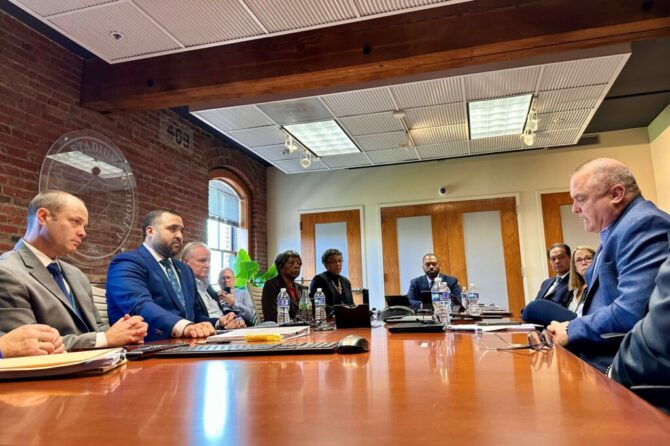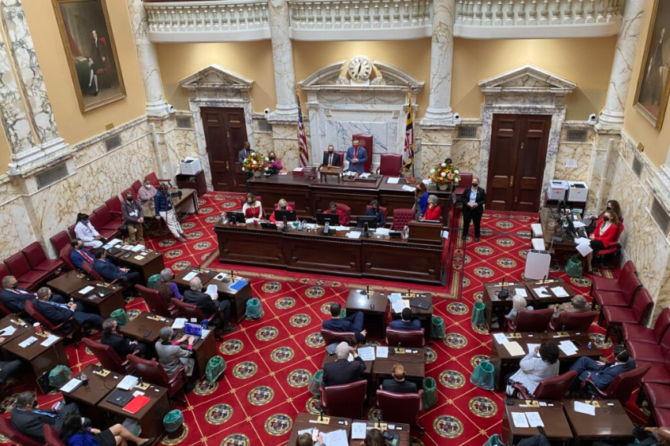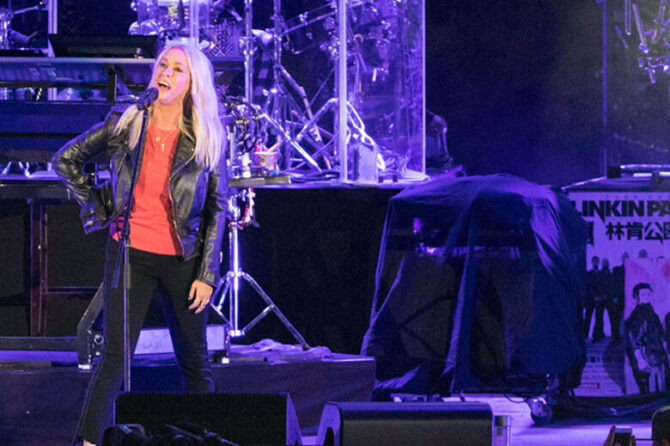MARYLAND MATTERS: State transportation officials said they will seek more than $3 billion in federal funding to ease congestion around the American Legion Bridge, a move that could potentially provide traffic relief in the region without privately managed toll lanes.The application submitted Monday seeks a $2.4 billion federal grant from the U.S. Department of Transportation. The application, however, does not preclude a public-private partnership model favored by former Gov. Larry Hogan (R).“The opportunity to use public funding, particularly if we can put out any federal dollars, just makes a lot of sense for us to do,” said state Transportation Secretary Paul Wiedefeld. “And sort of in a larger picture, P3s … can work in different situations. We’ll see if it applies to this. Right now, we’re focusing pretty heavily on the public financing of this project.” The announcement was met with praise from Montgomery County Executive Marc Elrich (D).“Upon hearing this news today, there are going to be many activists, residents, and commuters concerned about tolling, environmental impacts, as well as potential expansion of these roads into nearby communities,” said Elrich in a statement. “While I understand their trepidation, I am heartened by the Moore Administration and MDOT acknowledgement that engaging with the communities is fundamental to the success of this project, and based on conversations thus far, I am optimistic that this project can be done without the impacts that people are concerned about.”The proposed project extends along a 6.5-mile stretch from the George Washington Memorial Parkway to the western spur of I-270.
Future phases could be used to address congestion from the west spur of I-270 to I-370, north of Rockville.State officials said phasing in the project will allow for “a rational and fiscally prudent phased development.”Wiedefeld said the state will also seek to make use of express bus options in Maryland and connections to Virginia, ridesharing incentives and improvements to the MARC Brunswick Line and Bus Rapid Transit.“Initially, it is through bus and vehicle and carpool, but we’re not going to eliminate the possibility of doing something greater on the transit side in the future,” said Wiedefeld. “So, whatever we would do would support that.”But Wiedefeld said those other options are “a little bit further down the line.”The plan includes a rebuild of the American Legion Bridge, long seen as a bottleneck for commuters.“The bridge is the current choke point, and it made no sense to start elsewhere,” said Elrich. “By starting at the bridge, we can then see how that work impacts the traffic flow on the Beltway and on I-270. I am also encouraged that the Governor’s announcement today actively includes transit as part of the solution — a distinct, key difference from the previous administration.”Managed lanes would be used to widen portions of the project.The project, which has not yet been finalized, will likely include some form toll lanes. Those lanes, if managed by state government, would likely be less expensive than what was projected if the project was built and managed for the state by a private consortium.“If you use a P3 … there’s a certain margin that has to be met for those for those companies that do their work,” said Wiedefeld. “They have to pay for what they’re building but then they’re also a business and making some revenue.
Obviously, you take that off the table, if you’re dealing with public funding.”Citizens Against Beltway Expansion, a coalition of community and environmental activists, said Gov. Wes Moore (D) is “pursuing a flawed plan project” initiated by his predecessor“Instead of taking a fresh look at transportation needs and smart alternatives in the I-495/I-270 corridor, the administration is relying on the flawed Record of Decision from the previous administration’s managed lanes study,” according to a statement issued by the group. “That study received thousands of public comments revealing its shortcomings and is the subject of ongoing lawsuits. It is extremely disappointing that Governor Moore, a champion of equity and sustainability, is embracing it.”The project — pending funding — could be completed as soon as 2031.“Well, it would be years, obviously,” said Wiedefeld. I think we also need to work very closely with a lot of other players in this, clearly the communities and some of the other stakeholders. That will drive some of this schedule, clearly.”A review and approval could come in three to six months, according to Assistant Transportation Secretary Joe McAndrew.“Right now, the ball will be in their court to review kind of how our grant matches up to the criteria set out,” McAndrew said. “And then they’ll weigh our application against our peers throughout the country to determine whether or not we are deemed worthy. We think we’ve got a very competitive grant application and we’re hopeful and optimistic.”The state’s 61-page application seeks roughly $2.4 billion in initial funding. Wiedefeld said the agency will seek another $800 million from “a different pot” of federal money. The state would contribute about $800 million.
The existing record of decision from the I-495 and I-270 plans proposed under Hogan will be used for the implementation of managed lanes under the new plan.The project will still require additional permits including the U.S. Army Corps of Engineers.Additional environmental approvals and permits could be required if the project expands.Hogan proposed in 2017 what was then considered to be the largest public-private partnership in the nation.The state eventually awarded an initial predevelopement contract to Transurban and the members of the consortium known as Accelerate Maryland Partners. The group was considered the favorite to build and manage the expanded highways. The private consortium would recoup the cost of the project — estimated at $7.6 billion — over 50 years through toll collection. At the end of the term, the toll lanes would have reverted to the state.Moore vowed to change direction on the project.In March, Transurban announced it planned to exit the project.“Transportation is not just about physical mobility; it’s about quality of life, access and opportunity,” Moore said. “The transportation network throughout Maryland and the National Capital Region must be able to get people where they need to go in a timely and reliable manner. Providing long-desired, equitable transportation solutions in the American Legion Bridge and I-270 corridors is critical to eliminating employment barriers, linking more people to high-demand jobs and stimulating local economies.”
Photo: Traffic along the inner-loop of the Capital Beltway at the American Legion Bridge. Photo by Bruce DePuyt.










